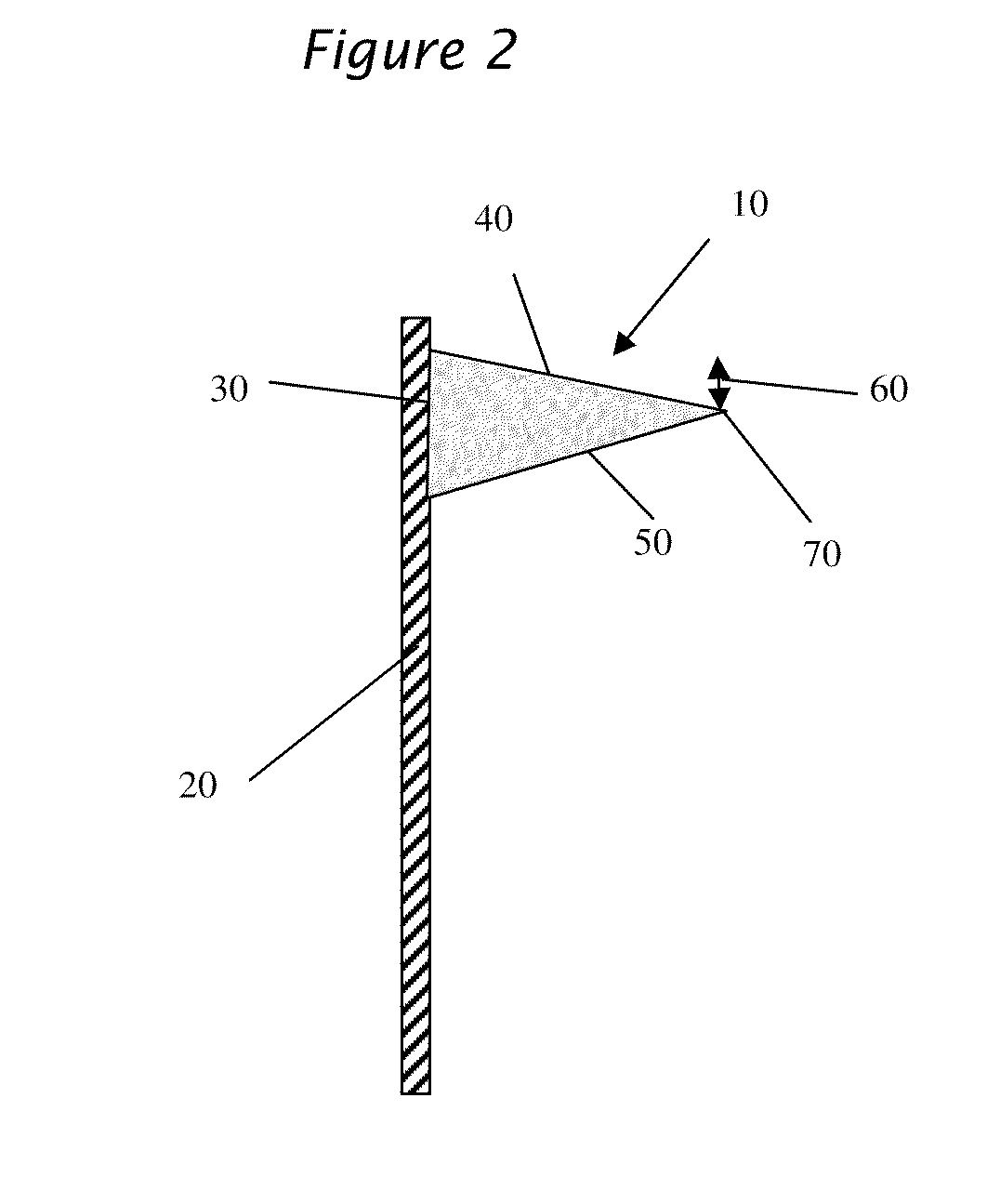Vehicular glass adhesive and method of adhering said glass
a technology of adhesive and glass, applied in the field of adhesive, can solve the problems of imperfections in the adhesive bead, interference in the proper installation and sealing of the window, and the problem of replacement window installers, etc., and achieve the effects of improving sag resistance, easy pumpability, and molecular weigh
- Summary
- Abstract
- Description
- Claims
- Application Information
AI Technical Summary
Benefits of technology
Problems solved by technology
Method used
Image
Examples
example 1
Prepolymer Mixture Preparation
[0064]A polyether polyurethane prepolymer was prepared by mixing the following reactants at 48° C.: 28.16 parts by weight (pbw) of a polyoxypropylene having an ethylene oxide end cap and a weight average molecular weight of 2,000 with 21.14 pbw of a polyoxypropylene triol having a weight average molecular weight of 4500 with 8.88 pbw of dipheylmethane-4,4′-diisocyanate and 0.005 pbw stannous octoate. After all the reactants were mixed, this mixture was then reacted for 1 hour at about 65° C. to form the polyether prepolymer.
[0065]After the polyether prepolymer was formed, 33.92 pbw of diisononyl phthalate plasticizer was added to the mixture and then mixed for about 0.5 hour. Thereafter, 1.27 pbw of *gamma-amino propyl trimethoxysilane, and 0.85 pbw of diethyl malonate were added to the mixture and mixed for 30 minutes. Finally, 5.78 ppw of an aliphatic polyisocyanate (HDI trimer) DESMODUR™ N-3300, available from Bayer Material Science AG, Leverkusen, G...
example 2
[0069]In this Example, the adhesive composition of Example 1 was placed in a sealed aluminum tube and heated to 54° C. and held at that temperature for 5 days to increase the Mz to 73,596 g / mole. This Example had a sag of 3.8 mm at ambient temperature (˜23° C.). Upon heating to 33° C. prior to forming the triangular bead to perform the sag test, the sag was less than about 1 mm. Upon cooling to a temperature of 12° C. prior to application of the triangular bead, the sag was greater than about 25 mm.
example 3
[0070]In this Example, the adhesive composition of Example 1 was placed in a sealed aluminum tube and heated to 54° C. and held at that temperature for 7 days to increase the Mz to 77,747 g / mole. This Example had a sag of 15 mm at ambient temperature (˜23° C.).
PUM
| Property | Measurement | Unit |
|---|---|---|
| temperature | aaaaa | aaaaa |
| temperature | aaaaa | aaaaa |
| temperature | aaaaa | aaaaa |
Abstract
Description
Claims
Application Information
 Login to View More
Login to View More - R&D
- Intellectual Property
- Life Sciences
- Materials
- Tech Scout
- Unparalleled Data Quality
- Higher Quality Content
- 60% Fewer Hallucinations
Browse by: Latest US Patents, China's latest patents, Technical Efficacy Thesaurus, Application Domain, Technology Topic, Popular Technical Reports.
© 2025 PatSnap. All rights reserved.Legal|Privacy policy|Modern Slavery Act Transparency Statement|Sitemap|About US| Contact US: help@patsnap.com



